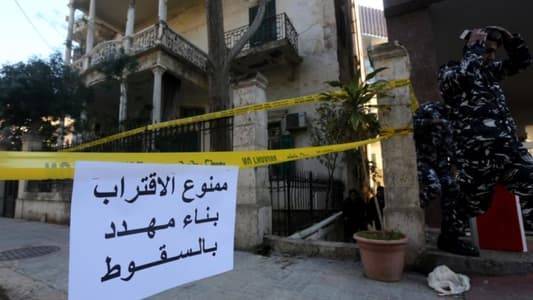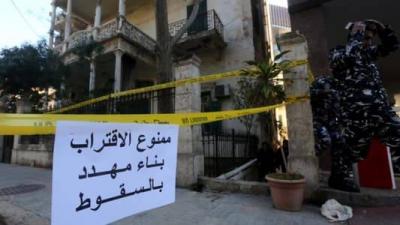On the morning of February 6th, everything in the country underwent a four-point tremor test, succeeding with varying degrees, resulting in cracks but no collapses. However, engineers agree that the scene would have been different had the tremor lasted over forty seconds. This instance of aftershocks brought only questions, without casualties, the most significant being: Are we prepared for a Turkish earthquake scenario?
Lebanon, tiny in size, lies on three major faults: Al-Yammoune, Serghaya, and Roum. Additional smaller branches of these faults literally fill the map along the coast in the heart of the sea, with some passing through specific villages that experience natural phenomena almost continuously, like the southern town of Sarifa. A historical look at both close and distant past reveals that major cities have either been destroyed or submerged due to earthquakes or tsunamis. However, the absence of such phenomena for extended periods—generally allowing a generation to live and die without experiencing them—quickly erases them from memory, thereby increasing their danger. In Lebanon, we have been complacent, awakened only by the earthquake that struck Syria and Turkey.
The "earthquake-resistant construction culture" that should always be present when building any structure in Lebanon is almost absent. The prevalent scene of violations, haphazard construction, and roofs poured at night before columns, out of sight of security forces, indicates matters contrary to all public safety measures and ignorance of the nature of the ground we inhabit. So, what if the earthquake that hit Turkey and Syria also affected us?
### The Disaster in Lebanon
Specialist engineers in public safety decisively answer: "Not prepared." In a simple simulation of an earthquake with a destructive power reaching 7 degrees, they confirm that a disaster would occur at all levels: “The administrative and healthcare centrality in Greater Beirut would hinder any effective movement of rescue teams, which may themselves need rescuing due to the dilapidated buildings they occupy,” referring to the Civil Defense buildings in Beirut and Mount Lebanon. To underscore their point, the engineering team notes that Turkey's large area allowed regions unaffected by the earthquake to assist those afflicted, relying on massive logistical capabilities, where 120,000 rescue workers took advantage of airports, train stations, and roads, in addition to essential financial support. In contrast, Lebanon has none of the mentioned resources.
### Slow Legislation
In contrast to rapid seismic developments that wait for no one, Lebanese legislation has been extremely slow; the term "earthquakes" has only appeared in building law dictionaries with the latest version issued in 2004 under number 646, nearly half a century after the 1956 earthquake and seven years following the 1997 tremors. The slow legal movement did not stop there, as the previous law also required implementing decrees. The public safety decree was not issued until 2012 under number 7964, waiting for the disaster of the Fassouh building collapse in Ashrafieh, which claimed 27 lives. This decree made technical audits to ensure buildings' earthquake resistance mandatory through a state-accredited engineering consultancy.
### Resistant Buildings
Ali Hannawi, Head of the Public Safety Committee at the Arab Engineers Union, categorizes buildings in Lebanon into two generations: "Before 2012 and after. The former is not subject to mandatory technical audits regarding earthquake resistance, construction robustness, and fire resistance as stipulated by public safety decree 7964, which gradually applied until 2016, when all residential buildings over 20 meters tall became subject to its conditions. Those shorter must meet some criteria set by the Engineers Syndicate, such as mandatory load-bearing walls resistant to earthquake-induced forces.” Hannawi emphasizes, "Every building intended for public use is also subject to this decree." This does not imply buildings resistant to earthquakes did not exist before 2012; they depended on the structural engineers' proficiency, who took all design considerations knowing we are in Lebanon under seismic influence.
### Submitted Buildings
Conversely, Hannawi asserts, “There is a serious problem with buildings violating building laws," viewing them as a "ticking time bomb," as they do not adhere to any safety protocols, often normalized through construction violation regulations presented as gifts every 20 to 30 years to offenders instead of punishing them. Additionally, extra floors often granted during election seasons via decisions from the Interior Ministry are considered "permits to violate building laws.” Legal buildings also "do not represent a single scene," according to Hannawi, as there are "old buildings over fifty years old concentrated in Beirut and Tripoli that require special studies to determine their technical conditions, alongside heritage buildings perpetually at risk of collapse."
The violation spectacle undermining building foundations goes beyond "illegal construction" according to Hannawi. "Every building is designed for specific loads related to its intended use (residential, commercial...), and the greatest risk arises from changing the intended use of buildings, car parks, and ground floors in residential structures, converting them into storage spaces or factories, which imposes large weights or machines that cause vibrations increasing stress on structural elements, thus weakening them and making them less resistant to any seismic movement.” Accordingly, Hannawi stresses the importance of "respecting area classification— residential and industrial. For industrial facilities built according to standards, using machines does not pose a problem, as such zones are not a risk to public safety, particularly during fires." He concludes by urging to "strictly enforce laws, not ignore the disaster, and embark on a thousand-mile journey aimed at conducting a comprehensive inventory of all buildings and facilities in Lebanon to establish a statistical database to identify buildings most at risk, enabling swift interventions where necessary, ultimately leading to safe construction and sustainable infrastructure that meets geographical and public safety demands."
### Who Will Pay?
The general survey of all buildings has indeed been decided upon during a meeting of the Disaster Management Unit in the Council of Ministers last Monday. However, the crux lies in execution first, and the decisions made based on the results second. Board member of the engineers' syndicates in Beirut and the North, Tawfiq Sinan, who attended the meeting, expresses concern on "the post-report phase regarding affected buildings." He questions, "What will the disaster committee reveal? If defects are found, who will pay for repairs or reinforcements? Who will hold the responsibility for fixing them? What is the legal text to be applied?” He answers, "There are no allocated credits to carry out the required tasks; the Disaster Management Committee meeting in the government palace concluded without any effects, and the work of the engineers' committees on the ground requires financial resources that have not been secured." Conversely, Sinan firmly asserts, "The syndicate's commitment remains; work will go ahead regardless, and the syndicate head calls for emergency meetings for the syndicate committees."
### Municipal Responsibility
Regarding the classification of Lebanese regions and the buildings most at risk, Sinan decisively answers, "It is impossible to respond to this question before completing the general survey," but points out "the accumulation of violations dating back to the reconstruction era post-1956 earthquake, which turn into a time bomb whose detonation time is unknown, along with the severe situation in Tripoli, where there are only data without serious attention." He places the technical oversight authority within municipalities, most of which lacked engineering teams inspecting construction quality, while being the body responsible for issuing building permits. He considers the essential question remains, "Who consistently permits construction violations, and later regularizes them? Who turns a blind eye to building on riverbeds and rocky cliffs like Bashamoun and Aramoun?"




